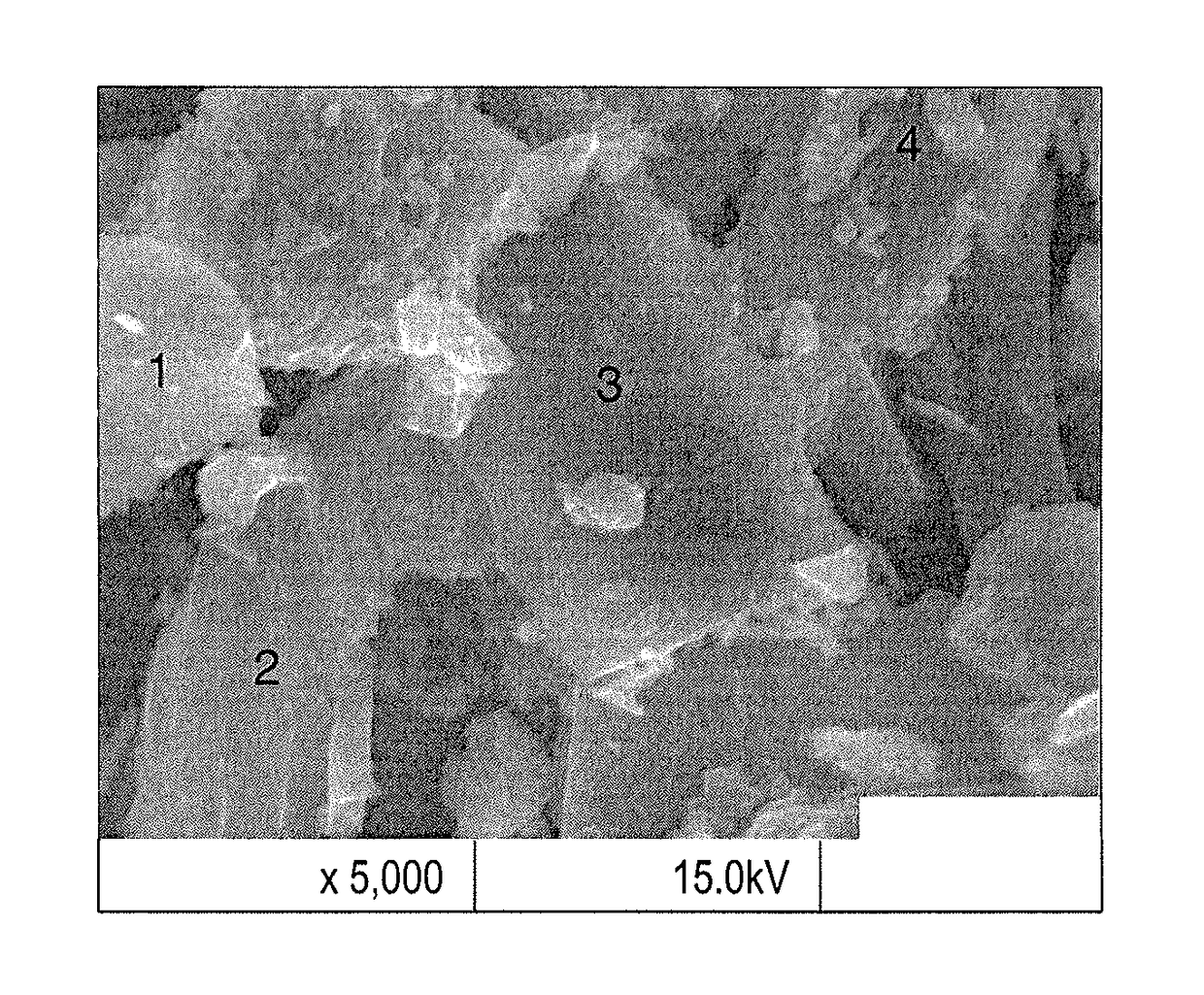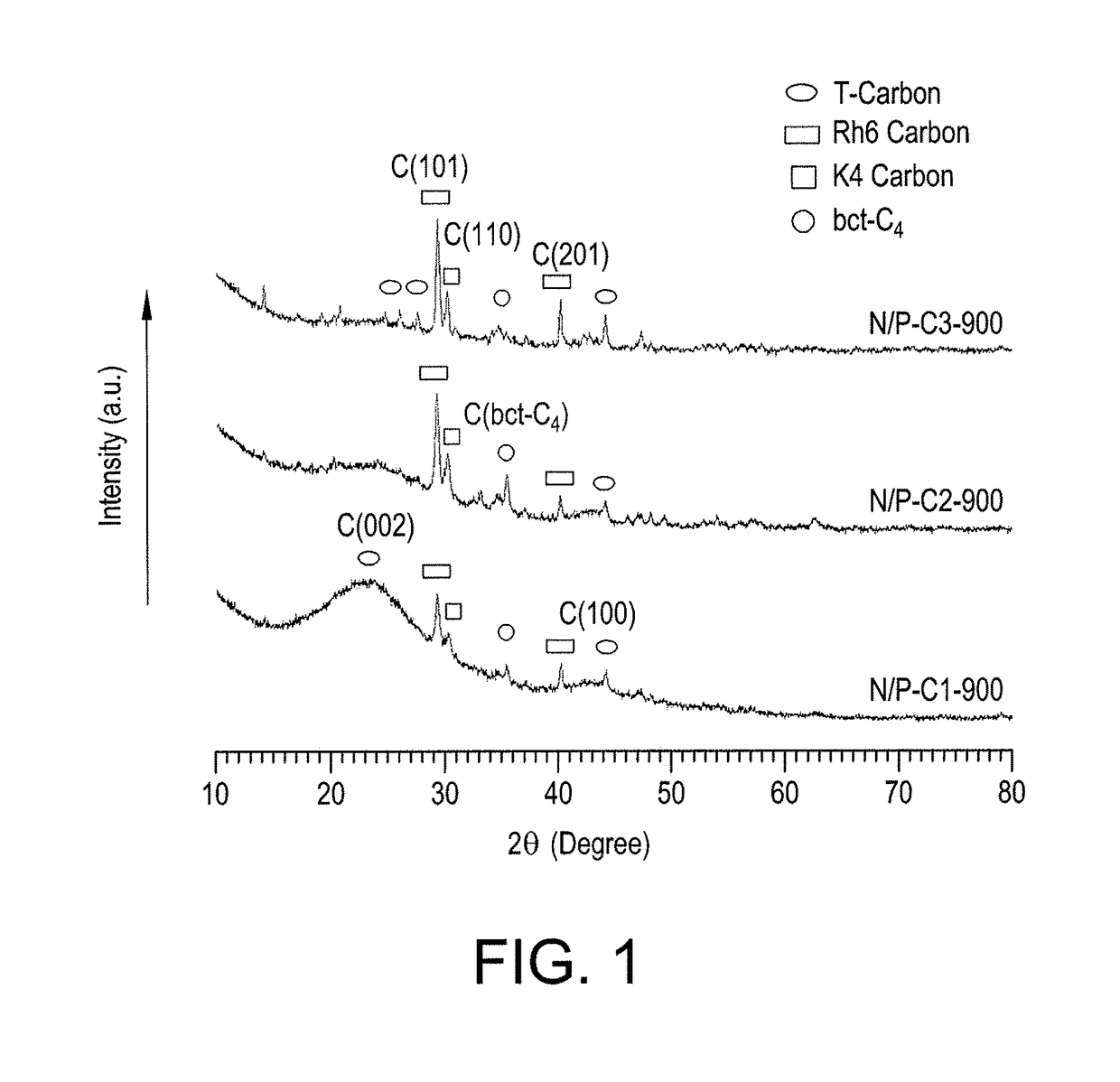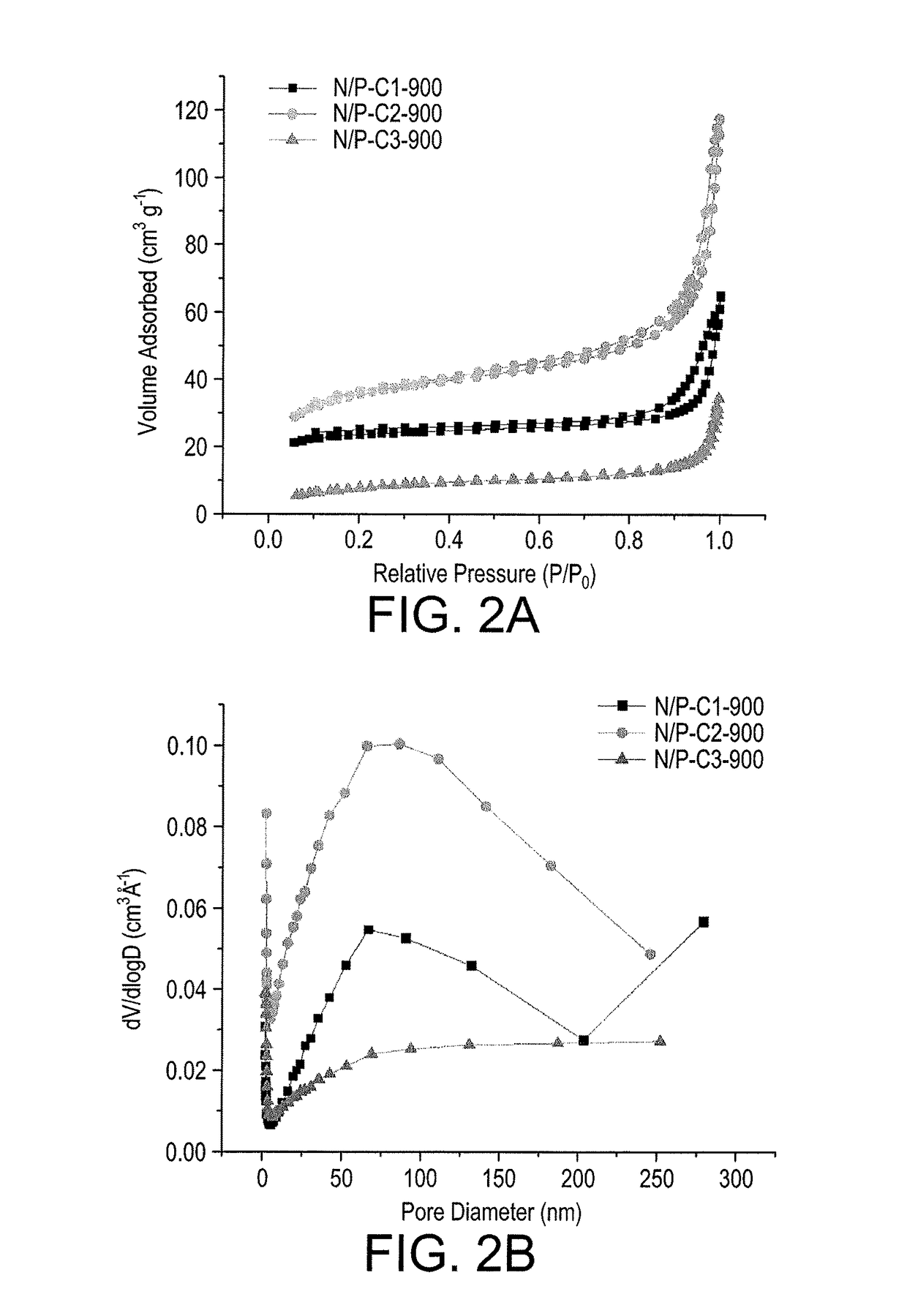Nitrogen and phosphorus co-doped crystalline carbon materials
a technology of phosphorus and carbon materials, which is applied in the field of carbon materials, can solve the problems of limited amount of currently available starting precursors for cm synthesis, inability to completely remove the template, and limited processing methods used
- Summary
- Abstract
- Description
- Claims
- Application Information
AI Technical Summary
Benefits of technology
Problems solved by technology
Method used
Image
Examples
example 1
Synthesis of N / P Co-Doped Crystalline Carbon Material
[0028]Briefly, a mixture containing known amounts of sucrose, urea, and ammonium dihydrogen phosphate (NH4H2PO4) were first dissolved in deionized water, followed by distillation of the solvent, and vacuum drying the residue overnight to obtain a dry solid mixture. By varying the mass ratio of NH4H2PO4 to urea, e.g., (1:3), (1:1) and (3:1), while keeping the amount of carbon precursor (sucrose) the same, three different starting mixtures, (N / P-C1-900, N / P-C2-900 and N / P-C3-900) were prepared. Specifically, N / P-C1-900, N / P-C2-900, and N / P-C3-900 are samples with varying the mass ratios of NH4H2PO4 to urea having ratios of (1:3), (1:1), and (3:1), respectively. Each of these mixtures was subject to pyrolysis by carbonizing the precursor at 900° C. in an argon (Ar) environment to obtain the corresponding nitrogen and phosphorus co-doped crystalline carbon materials. The choice of temperature (900° C.) for synthesis of the carbon mate...
example 2
XRD Analysis of N / P Co-Doped Crystalline Carbon Material
[0030]FIG. 1 shows the XRD patterns of the nitrogen and phosphorus co-doped carbon materials synthesized according to Example 1. The XRD studies of the synthesized N / P co-doped carbon materials (N / P-C1-900, N / P-C2-900 and N / P-C3-900) were carried out to validate the formation of graphitic phases due to carbonization at high temperature, and also to observe the amount of disordered phases created by the heteroatom (N / P) doping. Further, the XRD patterns show the effect of the additive composition (ratio of NH4H2PO4 to urea) on the structural alterations in the synthesized N / P co-doped carbon materials. Unlike most heteroatom-doped carbon materials, which exhibit a broad XRD peak (representing highly amorphous carbon phases), the presently synthesized N / P co-doped carbon materials contain a number of sharp XRD peaks, which exhibit the presence of various crystalline phases of carbon. The XRD patterns of the present N / P co-doped c...
example 3
Surface Area Analysis of N / P Co-Doped Crystalline Carbon Material
[0036]FIG. 2A shows the BET characterization of N2 adsorption-desorption isotherms for N / P-C1-900, N / P-C2-900, and N / P-C3-900. The shape of all three isotherms are similar to Type IV (according to IUPAC classifications) with clear hysteresis loops extending from P / P0=0.8 to ca. 0.99, indicating the coexistence of mesopores (pore diameter 50 nm) in these materials. The BET specific surface areas (SBET) of N / P-C1-900, N / P-C2-900 and N / P-C3-900 were found to be 74, 117 and 29 m2g−1, respectively. Since, all the samples were heated at the same pyrolysis temperature (˜900° C.), the differences in the SBET of the obtained N / P co-doped carbon materials indicate that the mass ratio of urea to NH4H2PO4 in the starting mixture may have resulted in varying surface areas exhibited by these materials.
[0037]The distribution of different pore sizes in these carbon materials was investigated from the BJH pore size distribution (PSD) c...
PUM
| Property | Measurement | Unit |
|---|---|---|
| Temperature | aaaaa | aaaaa |
| Fraction | aaaaa | aaaaa |
| Fraction | aaaaa | aaaaa |
Abstract
Description
Claims
Application Information
 Login to View More
Login to View More - R&D
- Intellectual Property
- Life Sciences
- Materials
- Tech Scout
- Unparalleled Data Quality
- Higher Quality Content
- 60% Fewer Hallucinations
Browse by: Latest US Patents, China's latest patents, Technical Efficacy Thesaurus, Application Domain, Technology Topic, Popular Technical Reports.
© 2025 PatSnap. All rights reserved.Legal|Privacy policy|Modern Slavery Act Transparency Statement|Sitemap|About US| Contact US: help@patsnap.com



